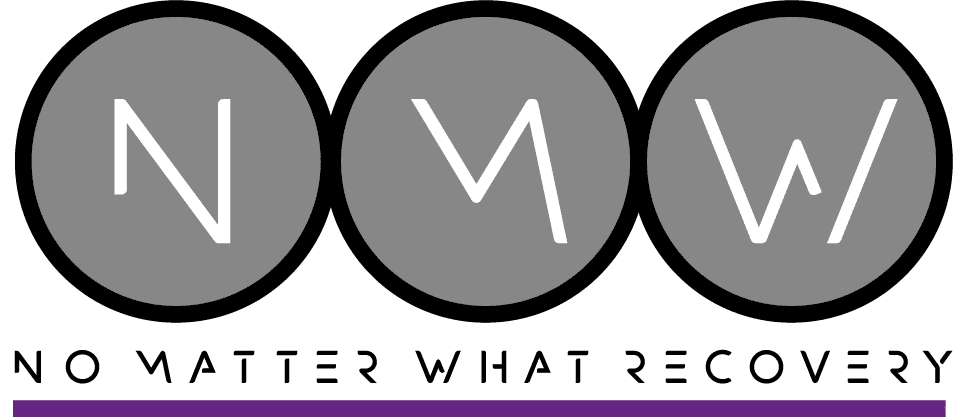Does Everyone Have Trauma & How Common Is It?
Table of Contents
Trauma doesn’t discriminate and can impact anybody’s life regardless of race, gender, religion, or socioeconomic status. Most individuals experience some type of trauma at some point in their lives, even those in the LGBT and gay communities.
It’s typical for people to recover over time. But, certain individuals do end up developing Posttraumatic Stress Disorder (PTSD). PTSD may occur following trauma.
Exposure to traumatic experiences, particularly those that occur during childhood, is linked with substance use disorders (SUDS), including dependence and abuse. SUDs are also highly comorbid with PTSD as well as other mood-related psychopathology.1
But does everyone have trauma, and is it the same as childhood trauma? When people think of childhood, this term immediately draws up images of:
- Joy
- Innocence
- Wonder
- Optimism
After all, childhood is supposed to be a time of security where the child is loved and protected. This stability the child feels in knowing a loving family protects them and enables them to form safe and solid relationships later on in their lifetime. But not all children experience this idealized expectation.
What Defines Trauma Exactly?
According to the American Psychological Association, trauma is the emotional response to a horrific event such as rape, an accident, or a natural disaster. 3 Right after this event, denial and shock are common. Individuals experience longer-term reactions such as strained relationships, flashbacks, nausea, headaches, and unpredictable emotions.
Can Trauma Ever Be a Good Thing?
According to a Harvard Business Review, individuals experiencing crises, stress, or trauma often wonder what good could come from it. There’s such a thing known as posttraumatic growth.4
Often negative experiences can lead to positive change, which includes things like:
- Improved relationships
- Recognition of personal strength
- A greater appreciation for life
- The exploration of new possibilities
- Spiritual growth
This often occurs in individuals who have endured natural disasters, war, economic stress and job loss, grief, and severe injuries and illnesses. Therefore, despite the misery that results from traumatic events, such as the coronavirus outbreak, many individuals can expect to experience healthy growth and development in its aftermath.
While post-traumatic growth frequently occurs naturally, without formal intervention like psychotherapy, it can be facilitated in five ways. These include:
1. Education
To experience growth through trauma, an individual must first become educated about what trauma is — a disturbance of central belief systems. For instance, before the coronavirus pandemic, many people thought they were safe from the illnesses that endangered individuals in the past; the bad things occurred in other areas of the world but not in their area; and their economic and social systems were resilient enough to take on events like this. But none of that holds true. So, now individuals must figure out what they should believe instead.
2. Emotional Regulation
People need to be in the right frame of mind before they can do any learning. This begins with managing their negative emotions like guilt, anger, and anxiety, which may be done through a shift of the type of thinking that brings on these feelings. Rather than focusing on failures, worst-case scenarios, uncertainties, and losses, individuals should consider best-case possibilities, recall successes, think reasonably about what they can do personally or as a group, and reflect on their resources and preparation.
3. Disclosure
Disclosure is the part of the process where individuals discuss what has occurred or is occurring:
- Its impact (both broad and small)
- Professional and personal
- Short- and long-term
- What they're struggling with in its wake
- Organizational and individual
Articulating these helps people make sense of their trauma and switch up their debilitating thoughts into more productive reflections.
4. Narrative Development
Their next step is to generate an authentic narrative about their traumatic event and their lives afterward. Hence, they can accept the already-written chapters and imagine coming up with their next chapters more meaningfully. Their stories should be about the trauma that results in a better future.
5. Service
Individuals do better following a trauma if they find meaningful work that is beneficial to others — helping those close to them or helping a broader community or other trauma victims.
Trauma Statistics in the US
It’s not rare to go through trauma. Actually, over two-thirds of children report experiencing a minimum of one traumatic event by the time they reach the age of 16.5
In adults, around 60% (six of every 10) of men and 50% (five of every 10) of women experience a minimum of one trauma in their lifetime.6 Women have a higher chance of experiencing sexual assault in their childhood and as an adult.
Men have a greater likelihood of experiencing the following:
- Physical assault
- Accidents
- Disaster
- Combat
- Witness injury or death
Anyone can develop PTSD. It doesn’t mean they’re weak. Various factors can increase the likelihood of a person developing PTSD, many of which aren’t under their control. For instance, if a person is injured or directly exposed to trauma, they’re more likely to develop PTSD.
Around 6% (six out of every 100 individuals) of the population will develop PTSD at any given time in their lives. Around 12 million American adults have PTSD during any given year. And this is just a small portion of individuals who have already been through a trauma.6
These are U.S. population-based statistics.
Trauma Statistics in the US
There are many forms of childhood trauma, including:
- Witnessing a traumatic event
- Sexual or physical abuse
- Witnessing domestic violence
- Having a serious condition that requires hospitalization and surgery
- Experiencing intense bullying
- Even intense circumstances like experiencing a large-scale natural disaster and refugee trauma
As adults, individuals are frequently unable to process these life events. Imagine the scope and scale through the eyes of a child — trying to process the burden of these types of experiences as well as trying to understand how they play a part in their occurrence. Kids don’t filter information through the scope of socialization, education, and life experience like adults do. They often blame themselves since they don’t have any other point of reference as to why events like these occur.
The impact of childhood trauma is significant, and children are burdened depending on the trauma and on themselves. If they come from a home that doesn’t offer them a sense of protection and security, they may attempt to develop their own types of coping mechanisms that allow them to function each day just to survive.
They may become used to a parent lashing out and live “on eggshells.” This results in sensitivity to every interaction and others’ moods, fearful that the person may go into a rage. Children like this learn to adapt to this environment by withholding their emotions. They mask their own anger, fear, and sadness.
The National Traumatic Stress Network states that there is a strong connection between childhood trauma and unhealthy, high-risk behavior, such as 7:
- Having unprotected sex
- Smoking
- Experiencing chronic conditions (i.e., cancer, heart disease)
People who have experienced abuse have a greater risk of experiencing anxiety and stress later in life. This long-term anxiety and stress can lead to them experiencing physical symptoms and emotional problems throughout life.
Essentially, trauma experienced during childhood creates a fractured foundation for the rest of a person’s life. How a person is raised and how it creates or harms their sense of security impacts the emotional- and in some cases, physical path they take as an adult.
How to Overcome Your Trauma
Overcoming serious trauma can take years of due diligence and hard work. The best way for an individual to move forward in their life is to seek advice from a healthcare professional who can help get them on the right course of treatment for their given situation.
Individuals who have recently dealt with a traumatic event may worry that they will feel horrible indefinitely. While coping with trauma can take some time before a person feels fully healthy and happy again, there are various steps they can take to help them move forward.
1. Accept Support
For a person to get past trauma, they first need to want to heal and be willing to seek support and help. It may turn out that much of an individual’s healing path occurs alone, or it may involve individual therapy or a lot of community support. Regardless of the route it will take naturally, they’ll have the best chances of full recovery when they’re in the space of accepting help and support.
Individuals can receive support from:
- A therapist
- A support group
- Their loved ones
- Friends or colleagues
The essential part here is that they get into the proper mindset where they understand that they can likely get help from others, and they are willing to accept that help.
2. Practice Mindfulness
Evidence shows that practicing mindfulness can be a helpful resource in a person’s recovery process since it helps them recognize their thoughts as they pop up and establish that these thoughts aren’t necessarily factual.8
It’s a big step towards better mental well-being when a person becomes suspicious of their first impulses and starts observing how much fear, suspicion, and self-hatred they bring to situations that most of the time don’t warrant them. By acknowledging their experience, they can understand what is driving their anxiety and fear and change their perspective over time.
The beginning of the end for a traumatized individual begins with a baby step — coming to realize that they may be traumatized and that the world might not be as fearful, dark, dread-filled, and overwhelming as they may have always assumed it was.
3. Avoid Recreational Substances
As a person heals from trauma, it may be highly tempting for them to do drugs or drink alcohol. Since recreational substances can be addictive and help a person’s brain stop feeling and thinking, this isn’t the best time for a person to use them.
They will be unable to work through their feelings if they actively avoid them by using drugs or drinking alcohol. It’s essential for people going through trauma to understand that ceasing substances is a temporary thing, and they’ll be able to go back to social drinking or other activities once they’ve allowed themselves some time to heal from their trauma.
4. Practice Self-Care
Self-care decreases stress. Not to mention, it feels good. Individuals should practice self-care during their time of healing from their trauma by taking action regularly to do things that make them feel good.
Self-care practices can be free and straightforward and may be as easy as taking a warm bath. What matters is that the person sets this time aside to care for themselves and they do things that make them feel good.
5. Connect With Others
Whether a person attends a support group around healing or not, connecting with other individuals is important here. They don’t necessarily have to talk about their trauma with other group members if it doesn’t feel right.
Just connecting with other people can be the key to happiness. Isolation while attempting to deal with trauma can often lead to depression and other adverse outcomes. It’s crucial that individuals who are coping with trauma spend time with friends and loved ones when they’re feeling up to it, and if it feels right, share what they experienced.
6. Physical Movement
Physical movement, like exercising, can help improve PTSD symptoms. Along with assisting individuals to heal, physical activity and exercise also provide their bodies with endorphins and other much-needed feel-good chemicals.
And, individuals don’t have to necessarily “exercise” to get their physical movement in if they’re not big fans of working out. They can:
- Take walks
- Rollerskate
- Take a bike ride
- Dance
- Move along to a yoga video
Anything that gets them moving their body will help them heal.
7. Find the Right Help
Individuals should seek the correct type of help for their situations. For instance, if they feel the next right step is therapy, they may look specifically into trauma-informed therapists. This ensures the therapist they’re speaking with actually works with trauma and can provide them with the best possible treatment.
Or, it may feel better for the individual to attend a support group where they’ll be around other people who have also experienced a trauma or have experienced similar circumstances. This allows the individual to find understanding and community.
How to Find Trauma Treatment
Recovery is the goal of everyone who has experienced trauma. Recovery is a process of change where people enhance their wellness and health, strive to reach their full potential, and live self-directed lives. Trauma can impact all areas of a person’s life, but healing is possible. Trauma-focused therapies can be beneficial.
Traumatic experiences can deeply imprint on a person’s mind and body. This impact can show up right away, or it can appear later down the road, affecting the person’s relationships, mood, and even sense of self. Fortunately, there are treatments available that are highly effective in helping individuals heal from trauma, including:
1. Cognitive Behavioral Therapy (CBT)
CBT focuses on the relationships among feelings, behaviors, and thoughts. It targets present symptoms and problems and focuses on changing the person’s thoughts, behaviors, and feelings that lead to troubles in functioning. It may be delivered in a group or individual format over 12 to 16 sessions.
2. Dialectical Behavioral Therapy (DBT)
DBT isn’t as widely known as CBT, but it encompasses components of CBT, mindfulness practices, and behavioral therapies. In dialectical behavioral therapy, the term “dialectical” refers to the integration of two opposing sides: change and acceptance. The foundation of DBT is built on the idea that change and acceptance coexist.
Frequently, individuals struggle with the notion of self-acceptance and allowing themselves to just be themselves versus attempting to change different parts of themselves that keep them from reaching their goals. Dialectical Behavior Therapy acknowledges the truth in both and that both can simultaneously occur.
For instance, a person dependent on substances can accept their addiction but still acknowledge that they or need to work toward change. Both can coexist, which is why DBT benefits many individuals with alcohol or substance disorders. While DBT does stem from CBT, it focuses mainly on four key areas: distress tolerance, core mindfulness, interpersonal effectiveness, and emotion regulation.
3. Eye Movement Desensitization and Reprocessing (EMDR)
EMDR is an effective trauma treatment. This process helps individuals rewire the connection between their emotions and thoughts, allowing them to reprocess their traumatic event, so they will no longer react the same way to it.
EMDR therapy is an effective treatment that provides many benefits for people going through treatment. EMDR helps individuals:
- Manage anxiety
- Overcome addiction
- Recover from traumatic experiences
And this is without the use of medication.
This treatment assists an individual’s brain in reprocessing thoughts linked to the traumatic memory or event they experienced. It involves bilateral stimulation, like rapid eye movement, acoustic sounds, and touching.
Find Help with No Matter What Recovery
Remember, traumatic events that individuals experience in their childhood can easily wind up following them into their adult years and create several long-term mental health problems that can lead to self-medicating through drug abuse or excessive drinking. This is why it’s important that individuals of the LGBT and gay community seek help and treatment as soon as possible.
No Matter What Recovery is an all-inclusive mental health and substance abuse treatment center that provides each client with individualized care. We offer a holistic approach and diagnosis modalities that focus on treating each client’s mind, body, and spirit. Contact us today to learn more about our trauma therapy and other programs at our luxury rehab that help with a healthy recovery.
References
- National Library of Medicine. Substance use, childhood traumatic experience, and Posttraumatic Stress Disorder in an urban civilian population. Lamya Khoury,1 Yilang L Tang,2 Bekh Bradley,1,3 Joe F Cubells,2 and Kerry J Ressler1. Depress Anxiety. 2010 Dec; 27(12): 1077–1086. doi: 10.1002/da.20751
https://www.ncbi.nlm.nih.gov/pmc/articles/PMC3051362/ - Substance Abuse and Mental Health Services Administration. Co-Occurring Disorders and Other Health Conditions. Retrieved on 1-19-2023 from:
https://www.samhsa.gov/medication-assisted-treatment/medications-counseling-related-conditions/co-occurring-disorders - American Psychological Association. Trauma. Retrieved on 1-19-2023 from:
https://www.apa.org/topics/trauma#:~:text=Trauma%20is%20an%20emotional%20response,symptoms%20like%20headaches%20or%20nausea. - Harvard Business Review. Growth After Trauma. Retrieved on 1-19-2023 from:
https://hbr.org/2020/07/growth-after-trauma#:~:text=We%20refer%20to%20it%20as,for%20life%2C%20and%20spiritual%20growth. - Substance Abuse and Mental Health Services Administration. Understanding Child Trauma. Retrieved on 1-19-2023 from:
https://www.samhsa.gov/child-trauma/understanding-child-trauma - U.S. Department of Veterans Affair. PTSD: National Center for PTSD. Retrieved on 1-19-2023 from:
https://www.ptsd.va.gov/understand/common/common_adults.asp#:~:text=About%206%20of%20every%2010,to%20witness%20death%20or%20injury. - The National Child Traumatic Stress Network. Effects. Retrieved on 1-19-2023 from:
https://www.nctsn.org/what-is-child-trauma/trauma-types/complex-trauma/effects - Effects of Mindfulness on Psychological Health: A Review of Empirical Studies
Shian-Ling Keng,a Moria J. Smoski,b and Clive J. Robins. Clin Psychol Rev. Author manuscript; available in PMC 2013 Jun 11. Published in final edited form as: Clin Psychol Rev. 2011 Aug; 31(6): 1041–1056.
Published online 2011 May 13. doi: 10.1016/j.cpr.2011.04.006
https://www.ncbi.nlm.nih.gov/pmc/articles/PMC3679190/



